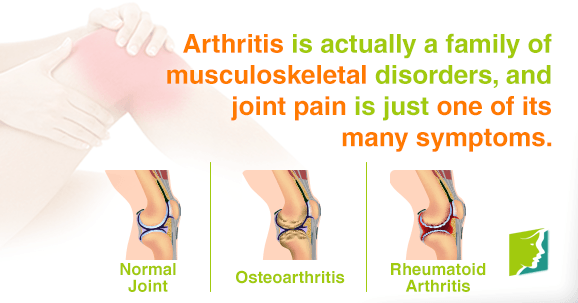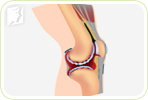Joint pain and arthritis can plague people in various stages of life, but both become more common during times of hormonal imbalance such as menopause. They are also more prominent in women than men, but many women are unsure about the difference between the two conditions. Continue reading to discover the causes, symptoms, and treatments of arthritis and joint pain, and what makes them different from one another.
Cause
The defining differences between arthritic pain and joint pain are their triggers and causes. Common joint pain, also known as mechanical joint pain, is often caused by every day events such as minor injuries. The joint may become stiff, inflamed, and painful. Joint pain can also result from to sitting or standing in the same position for extended periods of time, and it tends to go away on its own within a couple of weeks.
Arthritic pain, however, occurs when the body's immune system actually attacks the joints. This leads to joints becoming painful and inflamed, and it usually worsens with activity. Usually with arthritis the more you use your joints, the more painful they become.
Symptoms
The manner in which the symptoms of arthritis pain and joint pain display themselves can indicate which one is causing the problem. General joint pain tends to occur locally with tightening, tenseness, and discomfort, usually in only one or two joints. However, if you're suffering from arthritis, joint pain is just one of the symptoms. Arthritis can also include general pain all over the body, often occurring symmetrically.
Treatment
First, it can be difficult to discern between joint pain and arthritis pain. However, arthritis will show up on blood tests, whereas general joint pain will not. Joint pain can be treated with home remedies such as hot compresses, ice packs, over-the-counter medication, and massage, while arthritis can be treated with specific anti-arthritis drugs.
Suffering from joint pain or arthritis can be frustrating and uncomfortable. By learning about these two conditions and understanding the difference between them, you are better equipped to tackle treat them if they occur. If you have serious concerns about your symptoms, or they are occurring in combination with other conditions, you consult your doctor.
Explore the links below for further information on how to handle this menopausal symptom.
Sources
- Love, Susan M.D. Menopause and Hormone Book. New York: Three Rivers Press, 2003.
- National Health Service UK. (2012). Osteoarthritis. Retrieved September 27, 2013, from http://www.nhs.uk/Conditions/Osteoarthritis/Pages/Symptoms.aspx



